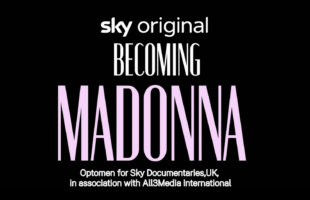Tong Hai TAN,
Chief Executive Officer, StarHub
Q: How are you growing your content/ channels?
Tan: We always seek to provide the widest range of quality content for customers and their families. In addition to channels with broader appeal, we will continue to be on the lookout for niche content to cater to unique needs of our customers. For example, we recently improved our Asian content offering with the addition of Hello! Japan, which caters to viewers interested in Japanese entertainment and lifestyle.
Localisation of content is also a key focus for us in 2013. It is increasingly important to provide viewers with content they can experience and personally relate to. Localisation is not new to us. For example, we have produced three seasons of the StarHub TVB Awards, a large scale star-studded event which showcases state-of-the-art virtual reality and augmented reality effects.
Q: What are new or emerging revenue streams that the company is pursuing?
Tan: We are looking at different ways to monetise content. The Media Business Unit was set up to handle content acquisition, content production and advertising sales. Over time, we are not only looking to produce quality local content, but also be able to build advertising across multiple platforms and sponsorship support to make our productions more viable.
To grow subs, our strategy is to compete on bundled services through our Hubbing strategy. For instance, Hubbing households with three services (online, mobile and TV) has been steadily increasing to 214,000 at end 2012. Our Hubbing Packs deliver true value to customers with bundled content and services versus the low price proposition of a la carte single service players. Hubbing enables us to truly engage and serve the new generation customer in this digital multi-play era. We also offer loyalty programmes through Hub Club to reward our existing customers. You will see StarHub take Hubbing to the next level with more integration in not just the price plans and bundles but product delivery. One of the examples of our Hub ID that enables customers to use a single ID to access and manage services across the board, including our digital portal services (from managing their StarHub account to our music store to TV Anywhere).
To reach out to non-pay TV homes, it is key to understand their needs and to innovate in our product offerings to appeal to this segment. For instance, we have launched “Anytime TV”, a new service which gives broadband customers access to VOD content and a basket of FreeView channels via a set-top box. This appeals to a new segment of customers who have not considered pay TV for various reasons, or time-poor cash-rich customers who appreciate VOD.
Q: What are the challenges or threats facing an operator like StarHub?
Tan: Our greatest challenges in the pay TV space are escalating content costs and content piracy.
While there is a threat of OTT cannibalisation, we have to embrace the technology and find new ways to create our own OTT offerings as well to monetise data, for example through tiered pricing.
Content today is consumed across multiple platforms, so we must take into account content consumed via Mobile and Online too. We have made significant investments in migrating our analogue set-top boxes to two-way interactive boxes. We have invested in analytic solutions in our Mobile and Online platforms to gain insights into customers’ usage patterns. With a comprehensive viewership data across platforms, we will be able to accord the right value to the content for acquisitions and renewals.
With regard to content piracy, our approach is to reduce the incentive for consumers to turn to alternative means for content by shortening the window periods and making it more affordable through bundled packages. Another approach is to implement site blocking which was recommended by the Media Convergence Review Panel in late 2012, and supported by industry players. If implemented effectively, this will be good news for both content owners and pay TV operators in Singapore.
Soo Hui LEE,
Head of Media Business Unit, StarHub
Q: (On portfolio) How is your portfolio similar to or different from Ms. Iris Wee’s?
Lee: Iris’ role took care of Home Solutions, Marketing and Content. I head StarHub’s Media Business Unit which comprises Content, Media Services, Production and Media Sales. The Media Business Unit is responsible for content management, namely content acquisition and production. Together with my team, I manage advertising across multiple platforms and sponsorship support to increase the viability of StarHub’s productions.
Q: You have an additional portfolio in Media Sales. Can you help me understand how sales and content might be working together in this new department?
Lee: We are looking at different ways to monetise content. Over time, we are not only looking to produce quality local content, but also to build on our 360o media advertising network and garner sponsorship support to make our productions more engaging and viable.
Q: (On original productions) What’s the company’s strategy for original productions?
Lee: Looking ahead, we will be placing a greater focus on local productions to differentiate ourselves from the competition. We can also apply for schemes like MDA’s Contestable Funds as we continue to commission production houses to bring quality local content to our viewers. Currently, we are working with TVB to produce a local version of highly-successful beauty and fashion infotainment programme Lady First, with well-known fashion stylists from Taiwan as well as Singapore.
Q: Any particular genre/ language of focus for original content?
Lee: Currently, we are already offering a considerable number of channels that we specially package for Singapore viewers, for example VV Drama, E City, Sensasi, Football Channel, SuperSports and SuperSports Arena. We are not restricting ourselves to a particular genre or language and are open to creative ideas from our production partners.
Q: (On sports content) What were the circumstances by which ESPN (now FOX Sports) had returned to StarHub?
Lee: We have a longstanding partnership with both ESPN STAR Sports (ESS) and FOX International Channels. Even when the ESS channels briefly left our platform in 2009, we continued broadcasting ESS productions on our inhouse channels. Since then, we are happy to say that the partnership has gone from strength to strength.
Q: Pricing for “live” sports content has gained much public attention. How are you balancing pricing with anticipated subs for each live sports event?
Lee: It is a known fact that content costs are rapidly increasing across all genres, especially in the area of sports content which places a significant premium on ‘live’ broadcasting. The key is to provide value to our customers. In addition to seamless ‘live’ broadcasts on TV, we can convey value by providing sports content on multiple platforms via TV Anywhere. Selected properties such as Formula One also have additional viewing angles on FOX SPORTS Play. Hence, the challenge for us lies in continually improving the viewing experience so that customers can see for themselves the added value in the content.
Q: Can you provide an update on the status of StarHub’s securing of BPL rights?
Lee: We hope to complete negotiations with the Premier League as soon as possible. We believe that SingTel’s acquisition of the BPL rights trips the cross-carriage obligation. We have raised this matter with the regulator and we understand that they are investigating this case.
Q: (About On-Demand) Why has the company decided on offering R21 content on-demand??
Lee: The R21 rating means that award-winning and critically-acclaimed films, programmes and documentaries can now be available on VOD with minor or no edits. This opens up a new segment of customers for us to serve. As demand for VOD content continues to grow across all genres, we will continue to provide engaging content to a broad range of tastes and cater to every member of the household.
Q: (On content piracy) Is there any kind of data suggesting loss of subs/ income as a result of content piracy?
Lee: Piracy is a serious concern for the industry. While it is difficult to prove the direct causation between loss of subscribers and content piracy, it undoubtedly remains our main competition.
Q: Are content providers concerned about offering content to StarHub as a result of the high rate of piracy in Singapore?
Lee: If anything, content providers trust us as we respect and uphold their intellectual property rights, unlike illegal video streaming websites. Content providers also understand that they must work with pay TV operators to reduce the incentive for viewers to turn to illegal means. Hence, we are working together to shorten windows and to make content available on multiple platforms such as “TV Anywhere”.
Q: What conversations are you having with MDA on this issue?
Lee: In late 2012, the Media Convergence Review Panel recommended the implementation of site-blocking, which was supported by industry players. If implemented effectively, this will be good news for both content owners and pay TV operators in Singapore.








